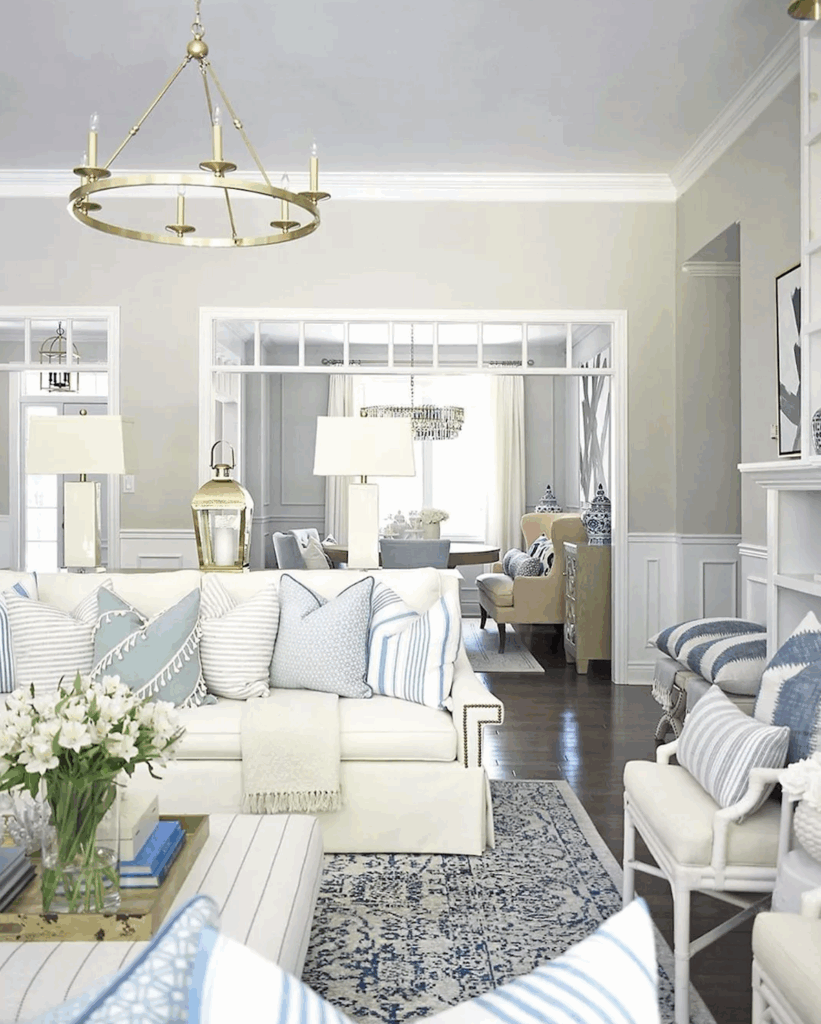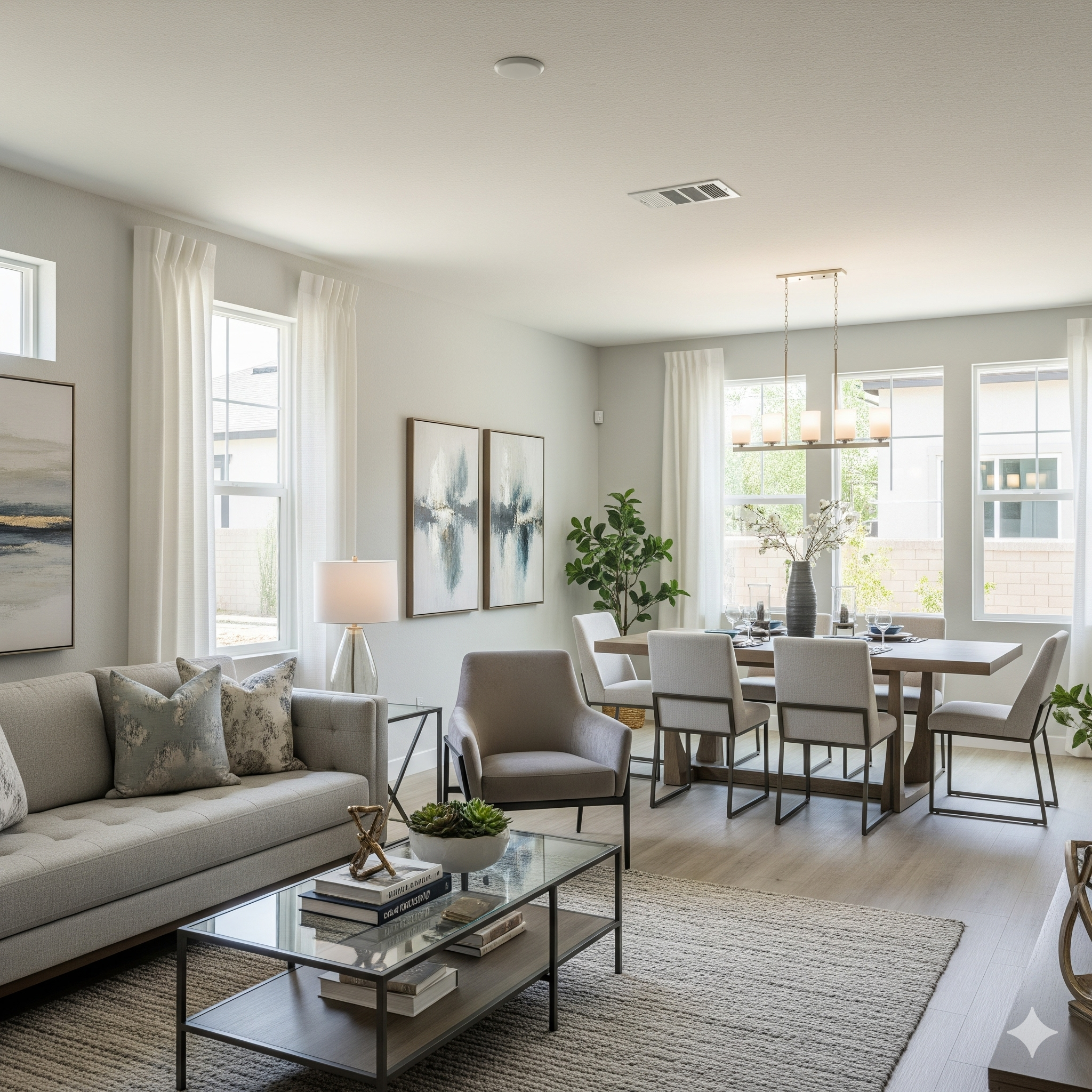In today’s real estate market, homebuyers are making decisions faster than ever. Whether scrolling through listings online or walking into an open house, their first impression can be the deciding factor. That’s where home staging becomes one of the most valuable strategies when selling a home. When done right, staging can make a property feel warm, welcoming, and memorable. It enhances the home’s strengths, minimizes its flaws, and allows potential buyers to visualize themselves living in the space. Creating that emotional connection is key to securing faster offers and better sale prices.
The Psychology Behind Home Staging
Staging is not about deceiving buyers or hiding problems—it’s about presenting a home in its most flattering light. Buyers aren’t just shopping for square footage and features; they’re searching for something that speaks to them on an emotional level. When a space feels lived in—but not too lived in—it becomes easier for buyers to picture their own lives unfolding there. A well-staged home tells a story, one where the buyer becomes the main character. This emotional storytelling, coupled with a clean and inviting environment, often leads to quicker sales and stronger offers. Even in a seller’s market, well-staged homes stand out from the crowd.
Starting with the Basics: Decluttering and Depersonalizing
One of the first and most important steps in staging any home is decluttering. Clutter can make even the most spacious room feel cramped and chaotic, so it’s essential to clear surfaces, reduce the number of visible belongings, and simplify what’s on display. Removing excess furniture can help rooms feel larger and more functional. Once the clutter is under control, the next step is depersonalizing. This means taking down personal photographs, unique collections, or anything that’s highly customized. The goal is to create a space that appeals to the broadest range of buyers possible. When people walk in and aren’t distracted by someone else’s memories, they’re more likely to imagine making their own.
First Impressions Start at the Curb
Even before buyers walk through the front door, they’re evaluating the property. Curb appeal plays a major role in setting the tone. A tidy yard, freshly trimmed landscaping, and a welcoming entryway can make a powerful impact. If the exterior looks neglected, buyers may assume the inside is too. A simple coat of paint on the front door, clean windows, and a swept walkway can go a long way in making a property more inviting. Once inside, that initial impression should be supported by a bright, open, and clean interior. The entryway should feel organized and intentional, offering a smooth visual transition into the rest of the home.
Let There Be Light: Using Brightness to Your Advantage
Lighting is often overlooked but can make a significant difference in how a home feels. Dark, shadowy rooms tend to appear smaller and less inviting, while bright, airy spaces suggest openness and comfort. During the staging process, it’s helpful to open all window coverings to allow in as much natural light as possible. Clean windows enhance this effect, making rooms feel fresher and more spacious. If natural light is limited, carefully placed lamps can add warmth and highlight focal points. The right lighting transforms how a room photographs, which is especially important since most buyers now see listings online before ever stepping foot on the property.
Creating Functional, Flowing Layouts
Many homeowners arrange furniture for comfort and everyday convenience, but when staging a home, it’s essential to think about space and flow from the buyer’s perspective. The goal is to make each room look as large and functional as possible. This may involve removing or repositioning furniture to open up walking paths and ensure nothing blocks windows or doors. Each space should clearly communicate its purpose, from a cozy reading nook to a productive home office. Undefined or awkward areas can be given function with subtle design cues, helping buyers understand how they could use every square foot of the home.
The Power of a Neutral Color Palette
When preparing a home for sale, neutral colors are your best friend. Bright or unusual wall colors might reflect a homeowner’s personality, but they can be distracting to potential buyers. Soft shades of white, gray, beige, and greige provide a clean canvas that appeals to most people. These tones also help rooms feel larger and more unified. When the color palette flows seamlessly from room to room, the entire home feels more intentional and sophisticated. Color can still be used for visual interest, but in smaller doses—think subtle accents in textiles, artwork, or greenery that enhance rather than dominate the space.
Engaging All the Senses During Showings
While visual appeal is critical, great home staging goes beyond what buyers can see. Engaging other senses can create a memorable, pleasant experience that sets your home apart. A faint aroma of fresh linen, lemon, or lavender adds to the perception of cleanliness. Quiet background music can create a calm atmosphere that encourages people to linger and imagine life in the home. Temperature plays a role too—a space that’s too hot or too cold can distract from all the work you’ve done to make the property shine. When buyers feel comfortable, they’re more likely to connect with the space emotionally.
Focusing on High-Impact Areas First
If staging the entire home isn’t possible due to time or budget constraints, it’s best to focus on the areas that matter most to buyers. The kitchen, living room, and primary bedroom are often where decisions are made. In the kitchen, it’s important to keep countertops clear and appliances sparkling. A single decorative bowl or a few cookbooks can provide a touch of warmth without feeling cluttered. The living room should feel like a space to gather, with seating arranged to invite conversation and relaxation. The primary bedroom benefits from soft lighting, well-made beds, and minimal furniture, all of which contribute to a sense of calm and luxury. These rooms are the heart of the home and deserve extra attention.
Photography and Online Presentation Matter
Once staging is complete, the final step is making sure your hard work is captured in high-quality photos. In today’s digital-first homebuying experience, most buyers will decide whether or not to schedule a showing based on the photos they see online. This means every detail counts. The lighting should be bright and natural, and the images should be taken from angles that showcase the flow and functionality of each room. If budget allows, professional real estate photography is a worthwhile investment. It ensures that the home is represented accurately and attractively, helping it rise to the top of search results and capture buyer attention from the start.
Making an Emotional Connection with Buyers
Ultimately, staging is about more than just cleaning and decorating—it’s about helping buyers feel something. When people step into a home and instantly feel at ease, they’re more likely to form an emotional attachment. This can lead to faster offers and sometimes even bidding wars. A staged home speaks to the buyer’s aspirations. It paints a picture of the lifestyle they could have if they choose that particular property. When buyers walk away dreaming about your home, that’s when you know the staging worked.
Final Thoughts on Selling with Style
Home staging is a powerful tool for anyone looking to sell a property quickly and at the best possible price. While it requires effort and attention to detail, the return on investment is often well worth it. By creating a clean, neutral, and emotionally engaging space, sellers can significantly increase their chances of success in the real estate market. Whether hiring a professional or tackling it on your own, focusing on presentation gives your home the best possible chance of making a lasting impression—and that’s the first step toward closing the sale.





